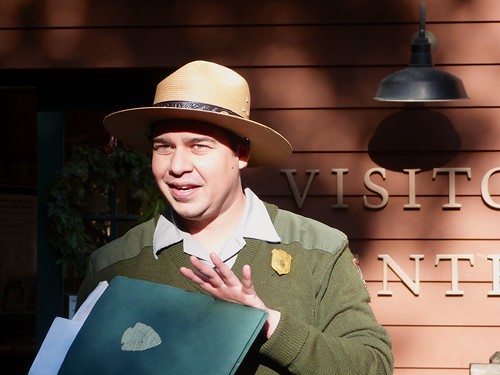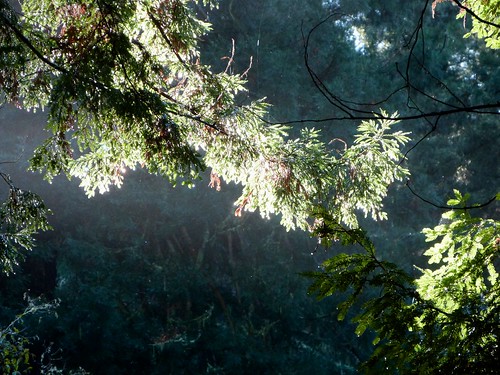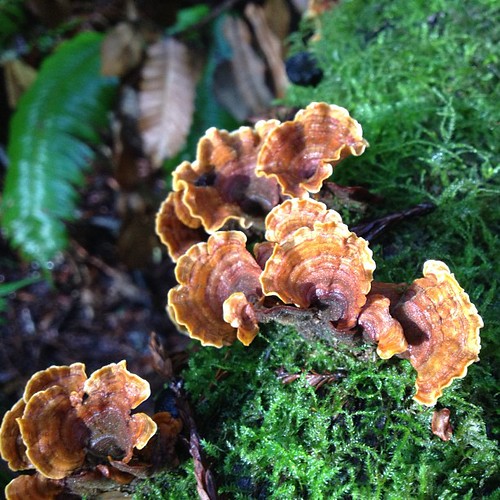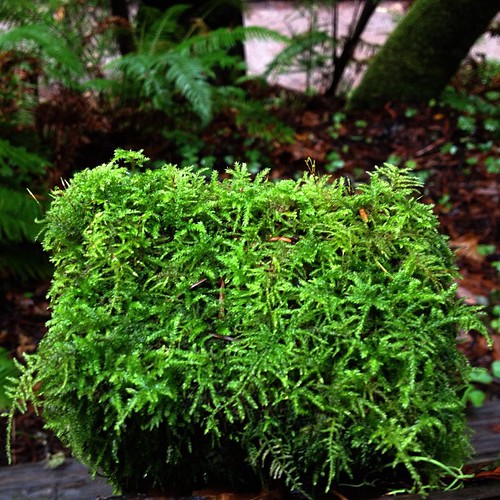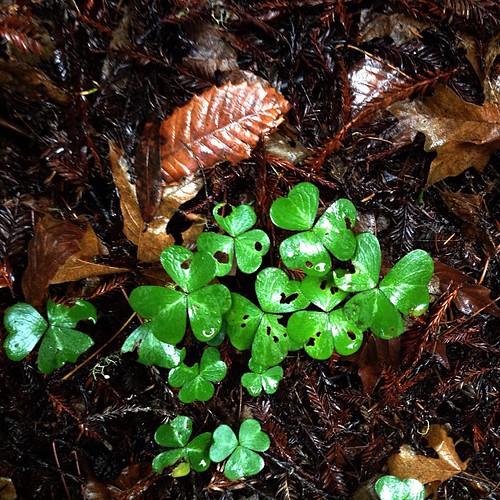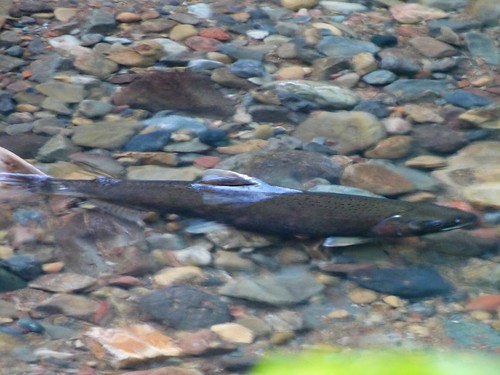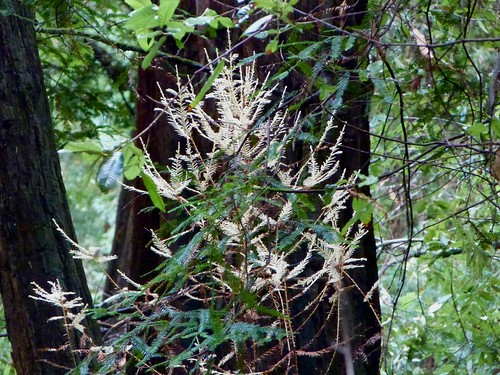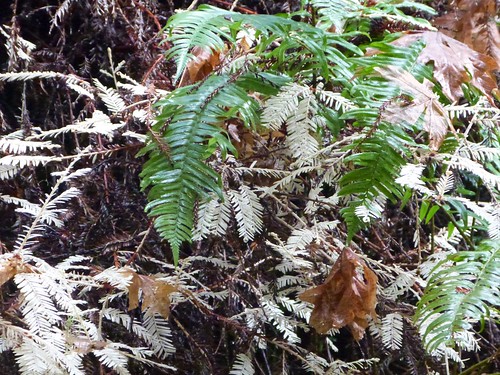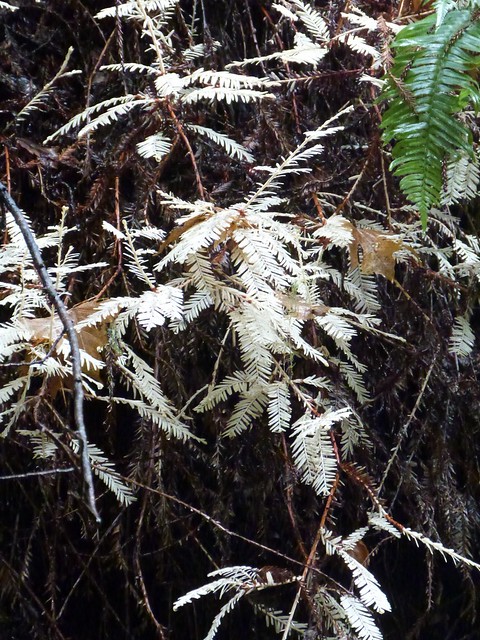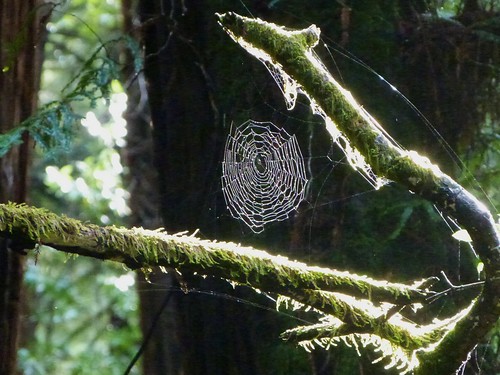Albino redwoods in Muir Woods
Nearly a year ago, we made an excursion to Muir Woods, on the slopes of Mount Tamalpais in Marin County, for a guided walk with a ranger to see something I had never even heard of before: Albino redwoods. As we assembled at the ranger station, we were greeted by a ranger, who explained the phenomenon, and what we would be experiencing.
Then, he took us into the woods. If you've never been to Muir Woods before, it's an awe-inspiring experience. Within steps of entering, you are fully surrounded by mighty redwoods, towering hundreds of feet above you. The canopy is fairly thick, and little sun penetrates. When it's a sultry summer day, this is a good thing. In rainy December, it is beautiful, but cold. And damp. And cold. And did I mention cold? But amid the grandeur of the trees, with their almost unimaginable scale, you notice the little things.
We spotted a female salmon in the stream, waggling furiously to excavate a spot for her eggs.
Finally, we stopped at one point in the trail. The ranger explained that redwoods are not standalone trees, but develop as colonies, spawning new trees from the root systems. Of course, some trees develop from cones, but by and large, each forest is a complex family stemming from the same genetic base. These albino trees, then, are mutations that crop up. Since they do not have any chlorophyll, they do not generate any energy of their own, and basically just subsist by draining sustenance from the root system.
After he had been talking for about five minutes, he offhandedly mentioned that we were standing in front of one, just then. We hadn't even seen it.
I think everyone in the group had the same expectation, looking for a shimmering Christmas tree looming large. But it was small, frail even. Yet it was undeniably a redwood tree with snow-white needles. The others we saw were the same, sometimes overshadowed by ferns.
The ranger explained that, although the albino redwoods could not photosynthesize, they appeared to be normal in all other ways. In fact, under unusually stressful conditions on especially hot years, they've been seen pollinating.
Apparently the pores on the needles of the albino trees are also extraordinary, larger, allowing more penetration of air and water. He snipped a small branch of one and a regular tree so we could see and touch them up close. The needles of the albino tree were smoother, almost like kid leather.
Do NOT do this yourself. The trees are relatively rare, and should be left undisturbed. In fact, there may be more of them now, were it not for some misguided Victorians who sold them as white Christmas trees.
While these are rare, they have been found in several redwood forests along the coast, and there are even variegated ones, with white and green mottling on the needles. Now, every time I walk through a redwood forest, my eye is trained.
What other wonders exist around us, hiding in plain sight?

